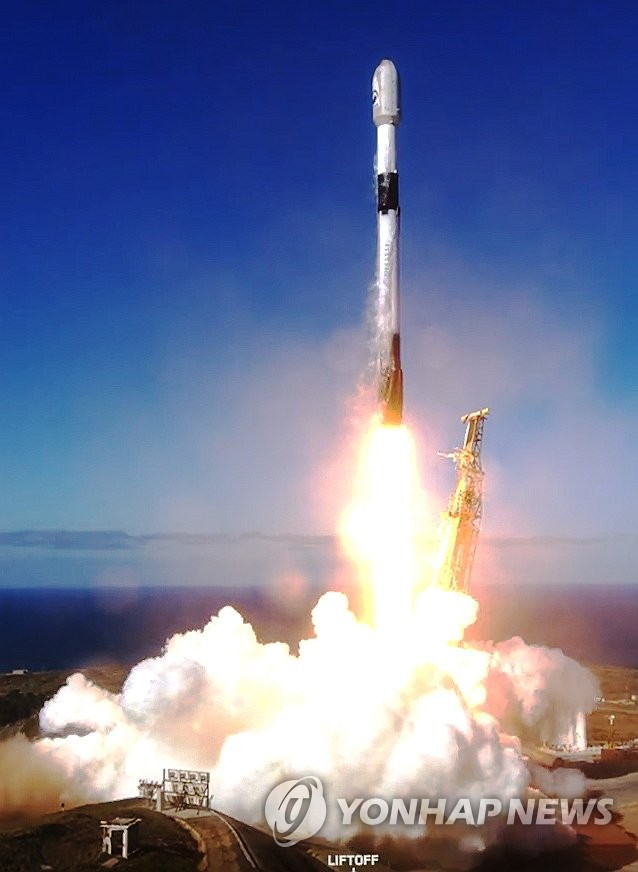 |
| ▲ SpaceX Falcon 9 rocket carrying South Korea's first indigenous spy satellite lifts off from U.S. Vandenberg Space Force Base in California on Dec. 1, 2023 (local time), in this photo provided by SpaceX. (PHOTO NOT FOR SALE) (Yonhap) |
(2nd LD) S Korea-spy satellite
(2nd LD) S. Korea's 1st spy satellite enters orbit after liftoff from U.S. base
(ATTN: CHANGES headline, photo; UPDATES throughout with more details)
By Kim Eun-jung
SEOUL, Dec. 2 (Yonhap) -- South Korea's first indigenous military spy satellite went into orbit after liftoff from a U.S. military base in California Friday (local time), the defense ministry said, in what would be a culmination of Seoul's quest for space-based intelligence capabilities amid growing North Korean threats.
The launch of the satellite atop a SpaceX Falcon 9 rocket from Vandenberg Space Force Base came after Pyongyang claimed success in its own spy satellite launch last week -- a move that underscored a growing inter-Korean security rivalry.
The reconnaissance satellite was placed in orbit approximately four minutes after launch at 10:19 a.m., the ministry said. The launch was live streamed on SpaceX's homepage.
As South Korea has relied on U.S. commercial and military assets for high-resolution imagery, it has been pushing to establish an independent military satellite network to gather information on North Korea.
Beginning with an electro-optical and infrared (EO/IR) satellite, South Korea plans to send four more synthetic aperture radar (SAR) satellites into space by 2025 to better monitor North Korea.
EO/IR satellites capture detailed image of the Earth's surface but cannot penetrate dense clouds, while SAR satellites can collect data regardless of weather using remote sensing systems.
The plan is expected to heat up a space arms race between two Koreas as North Korea sent its first spy satellite in orbit on Nov. 21 following two failed attempts earlier this year and vowed to launch more in a short span of time.
Military officials expressed hope that the reconnaissance satellites will serve as an "eye" for South Korea's Kill Chain preemptive strike system as they will enable the prompt detection or early warning signs of a potential North Korean nuclear or missile attack.
The Kill Chain system is a pillar of South Korea's three-pronged deterrence system that also includes the Korea Air and Missile Defense system and the Korea Massive Punishment and Retaliation, an operational plan to incapacitate North Korean leadership in the event of a major conflict.
(END)
(C) Yonhap News Agency. All Rights Reserved












![[가요소식] 조항조, 새 싱글 '아버지란 그 이름' 발표](https://korean-vibe.com/news/data/20251116/yna1065624915927473_582.jpg)










